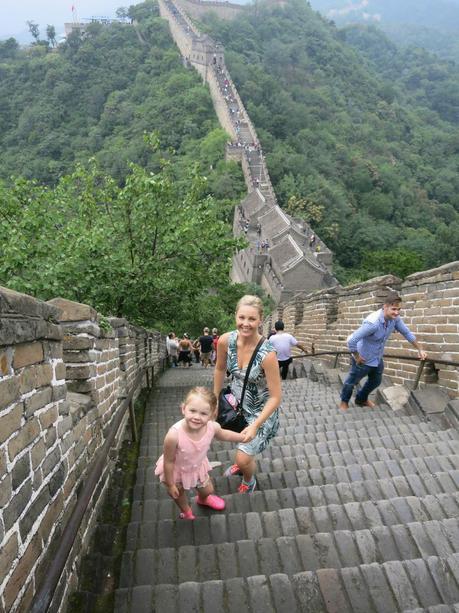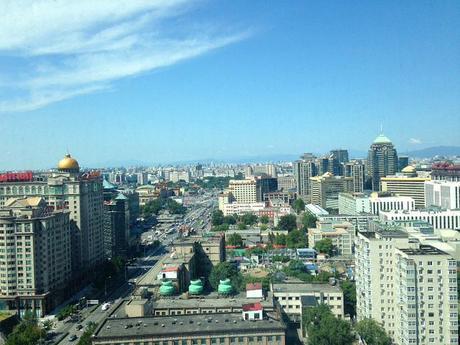
Beijing doesn’t beep!
Ok, so I’m assured they do! But given we arrived to a city in virtual lock down, it was a refreshing reprieve from the ‘ear-splitting,’ unrelenting honking that explodes from every corner of Xi’an.
It still intrigues me, that every time we’re introduced to a new city in China (let’s not forget there are 656) they are each “jaw-droppingly” unique.
Beijing was always at the top of the China bucket list. How could it not be….. the great political hub, the capital of the so-called ‘Motherland’ – a cultural cradle and the heart of the world’s fastest growing economy; not to mention, the centre piece of world-wide speculation and interest.
By the way (trivial fact) did you know Beijing was formerly known as Peking? (Ahhh so that’s why it’s famous for Peking Duck!)
Of course, we arrived at a time when Beijing admittedly wasn’t her true self. She had important visitors in town from all over the globe, so had gone to great lengths to impress with a stunning makeover.
Forget the ominous, thick haze of grey smog that more often than not drapes itself over the mighty metropolis; brilliantly clear blue skies decorated a peaceful, traffic-jam free city.
Fiercely proud and patriotic locals, prepared for the grandest military parade the country had seen in a decade. (For more on that you can read this post here.)
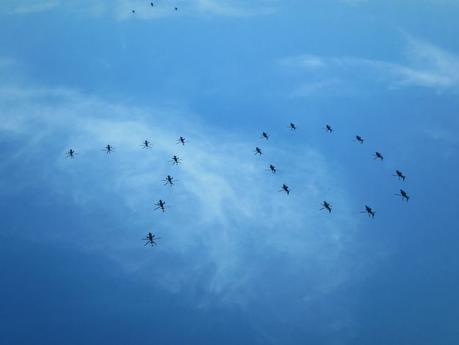
Nonetheless, gussied up or not, Beijing was always bound to be a compelling entity. Standing tall in the country’s far north, Beijing is the chalk to Shanghai’s southern cheese. Inhabiting a population of 21-million, just four million shy of her sister city, at face value, instead of the sleek, futuristic, flamboyant facade of Shanghai, Beijing exhibits an historical charm reminiscent of an ancient China that bears the hallmarks of a 3000 year old history.
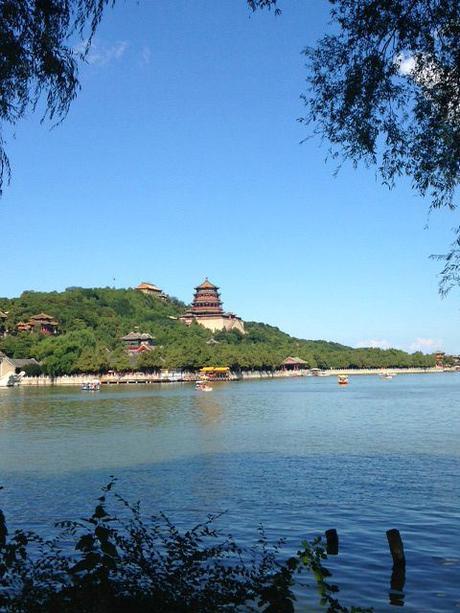
Not unlike a bigger version of little sister, Xi’an – Beijing’s concrete jungle is punctuated with remnants of a bygone era. Temples, tombs, walls, gates and palaces all featuring the unmistakable mark of Imperial China.
Home to seven UNESCO World Heritage sites, there are some exemplary places to tick off your sight-seeing list. Admittedly, we failed a few on our brief visit, given the timing of our trip. Mental note: city in lockdown for biggest parade in ten years has both advantages and disadvantages. (Not to mention numerous time wasting trips to the embassy to renew passports, which can’t be done when you live in the middle of China!)
Nonetheless a national holiday had its advantages – being able to actually see the majestic mountains that surround the city in the north and north west was one such perk. Little traffic on the roads meant getting around was relatively quick.
So, a Google search will no doubt bring up the big must see sights. I’ve got a few here for you plus my tips. (Grab your pen and paper.)
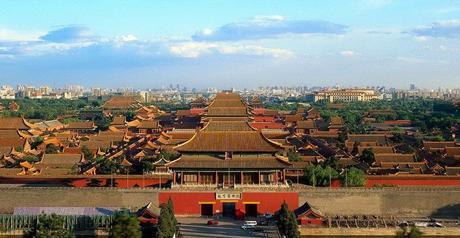
Forbidden City
The Forbidden City
Lying in the historical heart of Beijing, this is an enormous palace compound that was once home to the emperors of China’s Ming and Qing Dynasties. The Palace Museum itself holds imperial collections of Chinese art …and surrounding the Forbidden City are several imperial gardens, parks and scenic spots. You can easily spend all day wandering around here, if imperial art is your cup of tea, otherwise a quick wander through is probably sufficient. This was also the ceremonial and political centre of Chinese government for almost 500 years. Tip: Tourists can only enter from the South Gate.
(Side Note: in addition to the Palace Museum, if you like looking at ancient relics and cultural milestones, there are a “gazillion” museums in Beijing!)
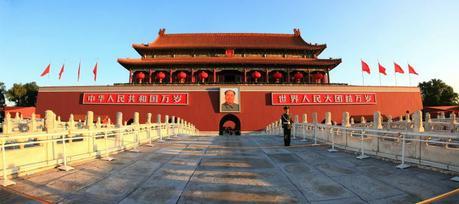
Tiananmen Square
This is also in the heart of Beijing just south of the Forbidden City. Here you’ll find the monuments to the heroes of the revolution, The Great Hall of the People (where the National People’s Congress is held and also where state leaders hold diplomatic meetings), the National Museum of China, and the Chairman Mao Zedong Memorial Hall (with Mao’s embalmed body, no less)! It’s one of the top five largest city squares in the world and is of course peppered with many moments of great cultural significance. Most notably (outside China) the protests of 1989, which China today doesn’t formally recognise.
Tip: You can see this place within a relatively short time frame. Mostly it’s about standing their and soaking up the history that has unravelled in such a poignant place in time.
To the west of Tiananmen Square is Zhongnanhai, the headquarters of China’s current Communist Party of China. Time permitting, you might want to take a peek.
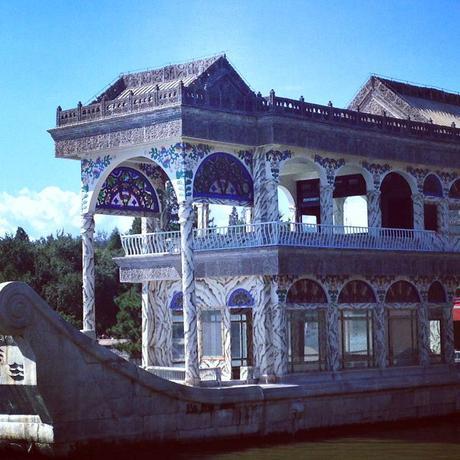
Boat made entirely of ‘marble!’ Summer Palace
Summer Palace
This is in the west of the city and was once the place for emperors of the Qing Imperial Family to escape to for a summer retreat. (I can just see them in their silk robes, gliding through the gardens, Pina Colada in hand.)
Inside you’ll find a maze of gardens and temples that surround a lake filled with boats of all shapes and sizes chugging around. You could spend a whole day here, just ambling along, soaking up the sunshine. (If you can see it!)
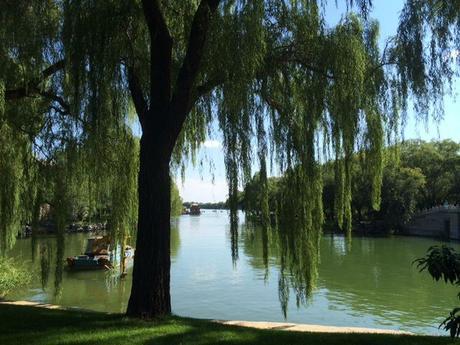
In 1998, UNESCO declared the Summer Palace “a masterpiece of Chinese landscape garden design.” The design was based on a legend in Chinese mythology about three divine mountains in the East Sea, while the lake is actually based on the blueprint of Hangzhou’s West Lake. The minute we entered it was a case of deja vu. (Just quietly I think Hangzhou’s lake is slightly more impressive.) Check it out here.
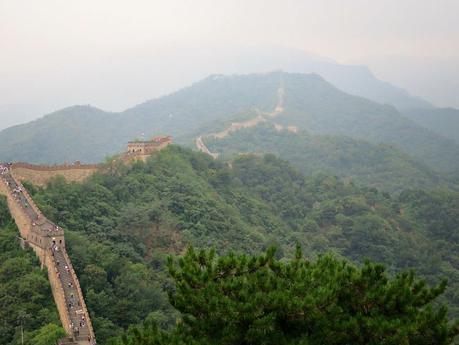
The Great Wall
There is a saying “One who fails to reach the Great Wall is not a true hero.” That said, If you do one thing in Beijing, it’s clearly a visit the Great Wall of China. Luckily for us, we managed to make the mandatory trek…..and what a breathtaking one it was. The world’s longest human made structure snakes across the historical northern boarders of China from east to west, for almost 9000 kilometres. Standing on the steps (some half a metre high) looking at it weaving across the lush, rugged land it’s hard to comprehend it’s history and reach. Made largely of rammed earth and stone, it was originally built as several separate walls owned by separate empires to protect against raids and invasions, but was later joined together to be known collectively as the Great Wall. Today little of it remains but those parts that are standing have been rebuilt and maintained. In China they call it (長城, changcheng) Long Wall and there’s no denying it is an admirable part of China’s history and future.
There are several points around Beijing from which you can visit the wall. We chose to go to Mutianyu, about a two and a half hour (steep and twisty) drive from the city centre. At Mutianyu you have the option of taking a cable car or ski type chair lift up.
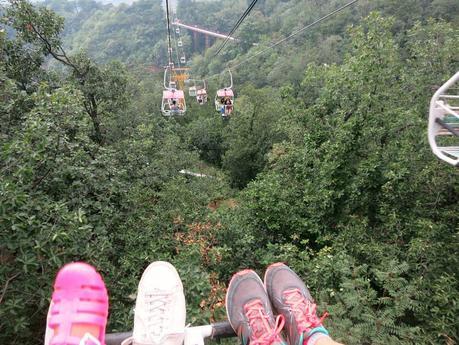
Of course, as panicked as the latter made me, it was an exhilarating ride. Coming down there is the unexpected option of a toboggan ride! Much to my relief disappointment, it started raining rendering the slippery slope unrideable! A white knuckle chair lift ride back down was our only option. Nonetheless up on the wall, it was truly spectacular and hard going. Note: Trekking this is not for the faint hearted. Wear sneakers!
Legend has it, the Great Wall is visible from space, and even though this has been debunked many times, it’s still ingrained in popular culture.
Tips:
If you are with a driver, opt to eat at Subway. Sounds strange, I know! But this buys you a ticket to drive right up to the gates into the wall. Otherwise you are stuck down at the parking lot waiting for a shuttle bus up, which can be considerably lengthy.
If you do have a driver/guide take you to the wall (which costs around 600-1000RMB) and you don’t want to make numerous stops along the way, be sure to make this clear or like us you’ll end up at money making ventures like the Jade shop wondering why you’re staring at giant Jade elephants with shop assistants a millimetre behind, just you in case you make a random decision to take one home (which of course if that’s your thing, by all means do!)
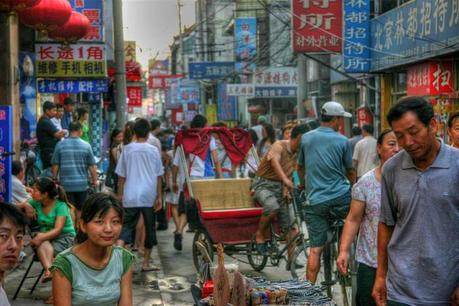
Hutongs
Of course Beijing is not just about the mighty monuments. There are plenty of other things to see including roaming through the city’s dwindling number of Hutongs. These are the old style alley ways that have traditionally been formed by lines of ‘siheyuan’ – courtyard residences – which are sadly being replaced rapidly with modern day high-rises.
Hutongs are usually straight and run east to west so the doorways face north and south for good Feng Shui! Laced with shops, restaurants and bars, you need to wander through these to get a feel for life in old China. Priceless.
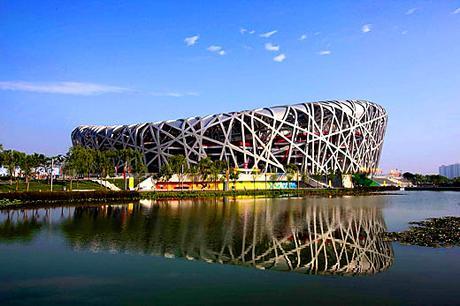
Beijing National Stadium (The Bird’s Nest)
To the north of the city centre is the antithesis to Beijing’s ancient monuments, the city’s contemporary answer to its architectural heritage. Today a tourist attraction it was built as the city’s National Stadium for the 2008 Olympic Games the unique structure that looks like bird’s nest came from the design team studying Chinese ceramics! It’s huge and covers an area of about 258 thousand square meters!
Note: It also boasts the largest ski resort in urban Beijing! So, if you’re up for some skiing…..
You can also check out the National Aquatics Centre, affectionately known as the “Water Cube” next door!
Sanlitun
This is Beijing’s cool spot. A haven of quirky bars mixed with chic designer stores and hip eateries, Sanlitun is a haven for expats. Take an early evening wander, grab a coffee or cocktail and soak up the civilisation.
Of course if you’re in Beijing it’s also mandatory to eat Peking Duck! Hot tip from a resident who highly recommends ‘Jing Zun’ on Chunxiu Lu in Sanlitun. The verdict: cheap and tasty!
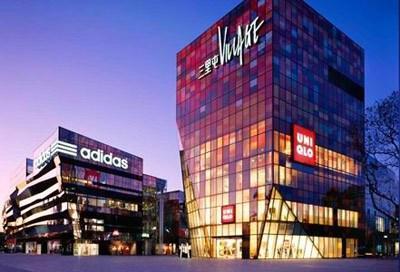
Beijing Zoo
If the sight of another cultural relic is all too much for the kids, take them to Beijing Zoo… it’s the biggest in China and has pandas!!
Chaoyang Theatre Acrobatic Show
There’s also a pretty impressive acrobatics show. As one of the oldest performing arts practiced in China, the spectacular skills honed over centuries are on display in this entertaining show. The kids will love you for it and may let you visit one more museum.
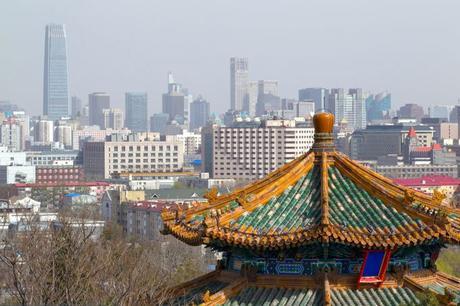
While English is definitely much more widely spoken than it is in, say Xi’an, it’s still rather limited. Knowing a few key phrases and having your hotel written in Chinese is invaluable.
With 2000 new cars on the roads each day, traffic is subsequently jammed! They call it the “Capital of traffic jams!” (Except when there’s a great big public holiday in place and roads are closed!) Avoid peak hours.
Pedalling is still a prime mode of transport (although I will say, there are many many more bikes on the roads in Xi’an – which is probably because Beijing thankfully has a pretty efficient subway and bus system.)
You can buy a train ticket from any underground station machine (English available) for the inner city for around 5 yuan.
If you take a taxi, don’t make the mistake we made and jump in a taxi without checking it’s legit. After a long, hot and rather sweaty stroll around the Summer Palace we were itching to get in a taxi and get home. We thought we’d hit the jackpot when we walked out and saw a taxi literally waiting for us. (Bad move!) Even though he mumbled something about VIPs and casually pointed to his ‘special’ badge (minus picture) dangling in the window, I paid no attention, just relieved the taxi didn’t smell and had seat belts! It was only when the metre rapidly shot up we knew something wasn’t quite right. He refused to drop us out the front of the hotel (no doubt because of security cameras) and tried to charge us three times the price. Scammed! Note: legal taxis all have 京B at the beginning of the number plate. Steer clear of the ‘black’ taxis with fake meters.
Alternatively use Uber or hire a driver at a relatively cheap cost.
Getting to Beijing is easy. Internationally most countries fly to the ancient capital; from within China you can fly or take a train to Beijing from most major cities. From Xi’an we got the bullet train. Cheaper, efficient, fast and a lot less hassle than a flight.
Note: Children under 1.2 metres tall are free….but this means no seat! Not ideal on a long journey. Much to the ticket office’s perplexity we paid for the small (but extremely wriggly) person to have her own seat.
Beijing for all intents and purposes is a city that packs a mean punch. In 2013 it had more Fortune 500 company headquarters than any other city in the world. In the next decade it is predicted it will be the largest economy in the world.
It’s a bustling melting pot of the old versus new…locals say it’s a city on the verge of losing its authenticity, as it hurtles towards the future at full throttle – the great capital of a rising world power.
There are ambitious plans in place to see Beijing become the world’s Super City – boasting a whopping population of 130 million! A mega city called Jing Jin Ji (wrapping together the cities of Beijing, Tianjin and Hebei) is already in the making!
Currently, Beijing is one of the most visited cities in the world.
If you’re up for the adventure, put it on the bucket list.
This is China.
